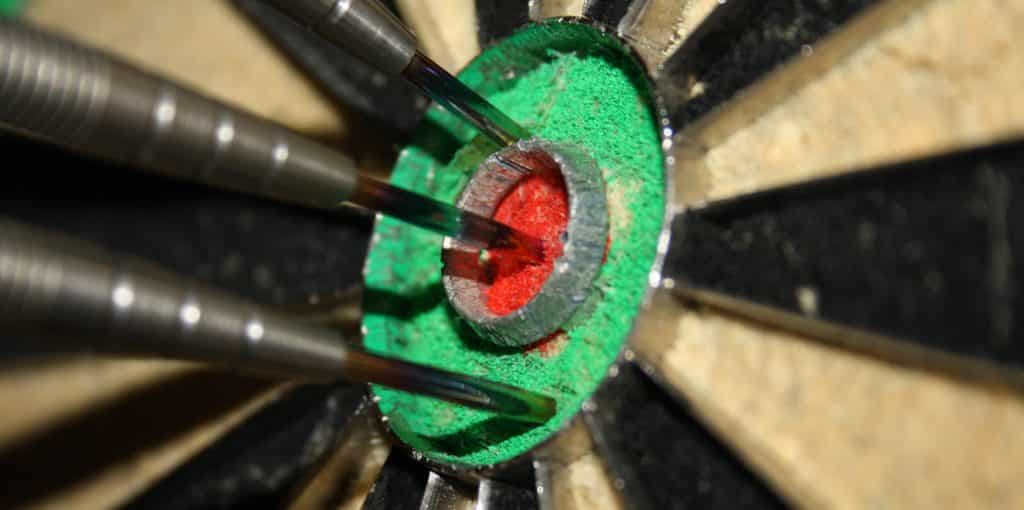
What Is a Secondary Character and How Do You Use Them?
As authors, we rightfully spend a lot of time thinking about our primary or main characters – discovering what drives them, where they came from and where they fall short.
But it’s a big mistake to spend all your time on your protagonist, and neglect your secondary characters.
Secondary characters – also known as supporting characters – are critical to the success of your story.
They can give it depth, colour and humour and will be critical to the plot and your main character’s arc.
In this article we’re going to examine in detail what secondary characters are, and why they’re important. We’ll take a look at some exemplary examples of secondary characters from literature and movies, and explore how we can develop secondary characters ourselves.
What Is a Secondary Character?

Secondary characters are the next most important characters after the hero.
While they are not the driving thread of the story in the way the main character is, we will get to know them very well, as they will be present for a lot of the story and will likely have their own arc in the form of a subplot.
They will have nuances and layers like a main character, including quirks, backstory and flaws.
Secondary, or supporting, characters are generally so integral to the plot that the story would fall apart without them.
If a character only appears in a few scenes and appears to be quite unchanging and two-dimensional, then it’s more likely they are a tertiary character.
What’s the Difference Between Primary and Secondary Characters?

The difference between primary and secondary characters is how central they are to the plot.
Most stories will have only one primary character – the protagonist.
The protagonist is the very heart of the story. It is their story that we’re being told. Their journey that we’re following. We see them change and grow as a person, and either achieve their goals or tragically fail them. Importantly, the main character drives the story. They must be active, and the consequences of their actions are the meat of the book.
If you think of a target, the primary character is the bullseye.
By contrast, secondary characters can be found in the first ring around the bullseye. The are still very close to the centre of the story. Secondary characters may even have their own arcs, and develop and grow – however, their evolution is not the main story – it supports the main story.
While their actions will have an influence on the story, they should not the taking the major decisions about how to proceed and respond to the conflicts and challenges that arise. They may advise, but they are not the main decision maker.
Note – There are stories which have multiple primary characters, where they really do all have equal importance, each having their own major arc and key story objectives. However, this is much more unusual, and tricky to pull off. ‘Ensemble’ stories such as these, will also still have secondary characters, who support the story without being its central pillar.
How Many Secondary Characters Should You Have?

As you might expect, there are no hard and fast rules about how many secondary characters will be best for your book. To find the answer, you have to ask yourself: what will your readers expect and enjoy?
You want to meet their expectations because they picked up your book in the hopes of having a particular experience. If you don’t deliver on that, they will be disappointed.
If you are writing an epic fantasy novel for adults, set across many regions and years, then it is customary to have large numbers of supporting characters, and your readers will be expecting that.
However, if you’re writing a contemporary children’s comedy novel, then it’s unlikely to be appropriate to have dozens of supporting characters and creating them will cause confusion and frustration.
If you’re not sure what number of secondary characters is appropriate for your novel, then read a few other books in your chosen genre. Note down how many secondary characters there are, and use that as a guide.
Why Are Secondary Characters Important?

Secondary characters fill many important roles in the story. Here are some of the major ones.
Secondary characters add a realistic dimension to the story world
The real world is full of people, so unless you’re writing some kind of experimental dystopia, yours should be too. We all have friends, family and colleagues who are close to us. Your world would feel very strange if the protagonist was floating around in a void of emptiness or strangers.
Secondary characters support the main character
A major role of secondary characters is to support the main character. This is often in the form of sidekicks, mentors and love interests. These characters follow alongside the protagonist, giving advice, assistance and filling in the gaps in their skills.
Secondary characters conflict with the main characters
Not all secondary characters are helpful. Antagonists are also secondary characters and will do everything in their power to stop the hero achieving their aims. Not only that, but even secondary characters that are usually a support, such as sidekicks, might occasionally turn around and disagree with the main character.
Secondary characters contrast with the main character
Your cast of characters should be diverse – no two should be so similar they can be muddled. But secondary characters in particular often exist to put your main character’s views and actions into relief. If your main character is headstrong and impulsive, then having a secondary character with similar traits will dilute them both. However, if the secondary character is their opposite – shy and cautious, then your main character will pop out of the page much more.
Secondary characters get key information across to the reader
An important practical function that secondary characters often fulfil, is to help explain things to the reader.
In novels, as opposed to movies, it is possible to just go directly into the head of the main character, and let the reader know what they’re thinking that way.
However, hanging about in someone’s head and listening to their internal monologing that get a bit tedious after a while, so a better alternative is to have the hero share their thoughts with secondary characters. These sorts of discussions can be lively, natural and entertaining.
Secondary characters provide comic relief
Another common calling of the secondary character is to provide comic relief. Main characters are usually thrust into such high stakes and gripping situations they don’t have time to make jokes, whereas a secondary character has more time to wryly comment from the sidelines, or be ridiculous to lighten the mood, without making the whole story seem ridiculous.
Secondary Characters Examples From Popular Fiction
Watson
Dr Watson from Sherlock Holmes is one of the most famous secondary characters from literature. Although we see things from his point of view – it is Sherlock who has all the agency in the stories and takes all the action, so he is the protagonist.
But as we do not have access to Sherlock’s inner thoughts, without Watson, a lot of the time the reader would have no idea what was going on. So he neatly fills the function of getting key information across to the reader.
Peeta
Peeta is one of the most important secondary characters in the Hunger Games, and fills many roles. He is a love interest, a friend and a support to Katniss. He also sometimes introduces conflict, when Katniss disagrees with his actions or views.
It is clear Peeta is a secondary character rather than a less important character, because he has depth, nuance, strengths and weaknesses and appears in many scenes from beginning to end.
Other secondary characters in the Hunger Games: Haymitch and Rue.
Hermione and Ron
Hermione and Ron are the key secondary characters in the Harry Potter series. They each contrast with Harry and each other and provide both support and conflict. Ron frequently provides comic relief and Hermione provides useful information.
As well as having multiple sides to their characters, Hermione and Ron both have their own arcs in the story, with their views, attitudes and priorities changing.
Other secondary characters: Draco and Hagrid.
How to Develop Secondary Characters

Because secondary characters are so important, it’s a good idea to spend almost as much time on them as on your protagonist. This is especially so for your antagonist.
So you may wish to follow our character development guidance in full, starting with creating a character and following on to developing them in more detail.
However, below we’ve outlined a more streamlined method of creating secondary characters, for you dive into right away.
Step One: Consider their role in the story
If the main character is the ‘sun’ in your story’s solar system, then the secondary characters are the planets in orbit. This means that everything they do is dictated by the gravitational pull of the hero’s main arc.
Consider what functions and roles the secondary character is there to fulfill, and think about how they contrast with the central character. The notes you make here should inform all that comes after.
Step Two: Get down the basics
Once you’ve got a grip on the role your secondary character is playing, note down some basics about them, such as their full name, age, appearance and occupation.
Write a few paragraphs about their role in the story, and how they evolve as a character.
Finally, decide on the following characterisation aspects:
- Motivation – what do they want?
- Positive traits
- Negative traits
- Quirks and mannerisms
- Fears and phobias
- Life philosophy and motto
Step Three: Add layers and nuance
In the last step you can add details and dimension to your secondary character, to really bring them to life and make them charismatic and memorable.
To do this you may want to consider:
Voice
Each character’s voice should be unique. This isn’t just their accent, but what sort of vocabulary they use, how assertive they are, speech patterns and quirks and more.
Read more about character voice here.
Backstory
Understanding a character’s backstory is extremely helpful in understanding what makes them tick, and creating characters who are conflicted but still consistent. Consider where the character grew up, what their childhood was like and any important events and experiences that shaped their personality and views.
Questionnaire
As a final exercise, you may wish to use a character questionnaire to inspire to think about aspects of the character you might not otherwise.
More Tips for Creating Secondary Characters

Variety / diversity
Once you’ve created a few secondary characters, look at them as a group and make sure there is enough contrast between them.
Are there any which are too similar in terms of appearance, personality, role or even name?
Each character needs to be pulling their weight, so if some can be merged without impacting on the story, then they probably should be.
Dynamic
Most secondary characters will be dynamic characters. This means they have an arc and evolve through the story, so they are not the same at the end as they were at the beginning.
The opposite of a dynamic character is a static character. These are characters who do not change through the story and are exactly the same at the end as the beginning. There is a place for static characters, and if you have a lot of secondary characters, perhaps some of them will be static, but in general you should aim for your secondary characters to be dynamic.
So check over your major secondary characters – how do they change between the first chapter and the last?
Round
Round characters feel layered and complex.
They have multiple sides to their personality, just like we all do. We might act one way as a mother but completely differently as a boss.
If characters aren’t round they are classed as ‘flat’. This isn’t necessarily as negative as it sounds, it simply means they do not break out of their stereotype. A mother is a mother and nothing else. A boss is a boss and nothing else. Flat characters have a important role to play in novels, and are common as tertiary (minor) characters.
However, the best secondary characters are round, not flat.
So check over your secondary characters – do they sometimes surprise, without being inconsistent? Or are they just a predictable caricature?
Conclusion

Hopefully you feel much better informed about what a secondary character is, and confident in developing your own.
As you’re reading books or watching movies or series over the next few weeks, identify the secondary characters and see what you notice about them.
- Which ones are your favourites?
- Which ones are the most memorable?
- Do some of them almost steal the show?
- Which do you find boring and forgettable?
- What makes some better than others?
See if you can apply some of the things you notice to your own characters!
Good luck and have fun with your secondary characters!
Further reading:
Here’s a good article looking at five archetypal secondary characters
And here’s one that explores how to develop compelling supporting characters
And here’s an article listing 11 secondary characters good enough to warrant their own book
Unlock your writing potential
If you liked this article by the Novel Factory, then why not try the Novel Factory app for writers?
It includes:
- Plot Templates
- Character Questionnaires
- Writing Guides
- Drag & Drop Plotting Tools
- World Building resources
- Much, much more

